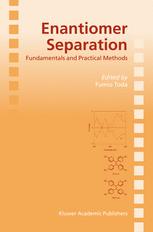

Most ebook files are in PDF format, so you can easily read them using various software such as Foxit Reader or directly on the Google Chrome browser.
Some ebook files are released by publishers in other formats such as .awz, .mobi, .epub, .fb2, etc. You may need to install specific software to read these formats on mobile/PC, such as Calibre.
Please read the tutorial at this link: https://ebookbell.com/faq
We offer FREE conversion to the popular formats you request; however, this may take some time. Therefore, right after payment, please email us, and we will try to provide the service as quickly as possible.
For some exceptional file formats or broken links (if any), please refrain from opening any disputes. Instead, email us first, and we will try to assist within a maximum of 6 hours.
EbookBell Team

4.8
14 reviewsIn spite of important advances in asymmetric synthesis, chiral compounds cannot all be obtained in a pure state by asymmetric synthesis. As a result, enantiomer separation remains an important technique for obtaining optically active materials. Although asymmetric synthesis is a once-only procedure, an enantiomer separation process can be repeated until the optically pure sample is obtained. This book discusses several new enantiomer separation methods using modern techniques developed by experts in the field. These methods consist mainly of the following three types: 1) Enantiomer separation by inclusion complexation with a chiral host compound 2) Enantiomer separation using biological methods 3) Enantiomer separation by HPLC chromatography using a column containing a chiral stationary phase. Separation of a racemic compound has been called “optical resolution” or simply “resolution”. Nowadays, the descriptions “enantiomer resolution” or “enantiomer separation” are also commonly used. Accordingly, “Enantiomer Separation” is used in the title of this book. The editor and all chapter contributors hope that this book is helpful for scientists and engineers working in this field.